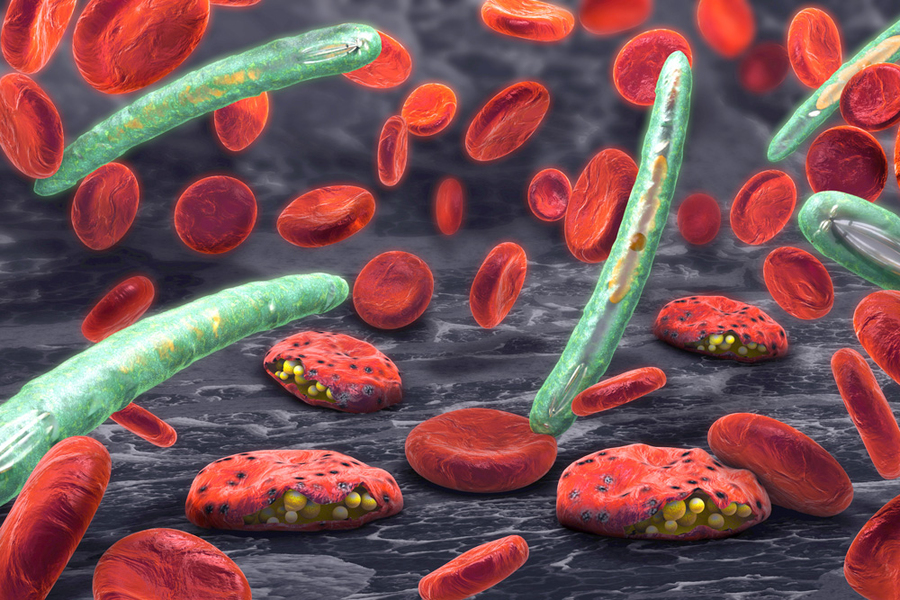Factors of Emergence and Methods of Preventing Infectious Diseases in the Summer Season
According to the World Health Organization, over 1,200 infectious diseases exist globally. Annually, 2 billion people worldwide contract infectious diseases, resulting in 17 million deaths.
Infectious diseases are conditions caused by pathogenic microorganisms, including bacteria, viruses, fungi, and parasites. These diseases are categorized into three primary groups: those that result in high mortality rates, those that impose a significant burden of disability on the population, and those that can have severe global repercussions due to their rapid and unpredictable spread. Factors that contribute to the emergence of infectious diseases include malnutrition, irregular and inadequate diets, vitamin deficiencies, physical exhaustion, extreme temperatures, helminthic infections, and high population density, among others. Infectious diseases not only present serious health risks but also propagate rapidly, affecting large numbers of individuals. Based on the transmission method and the affected body systems, infectious diseases are classified into five main categories: gastrointestinal, respiratory, dermal, hematological, and those with multiple transmission routes. Transmission occurs through various means, including air, water, food, contaminated objects, insect bites, and direct contact between infected and healthy individuals.
Airborne infections are particularly prevalent in respiratory illnesses such as influenza, measles, mumps, and tuberculosis. When an infected individual coughs, sneezes, or speaks, minute droplets of saliva or mucus containing the pathogen are expelled from the respiratory tract. These droplets can travel several meters and remain suspended in the air for extended periods due to their diminutive size. When a healthy person inhales these droplets, the pathogens enter the mucous membranes of the respiratory tract, leading to inflammation. Intestinal infectious diseases, on the other hand, are primarily disseminated through bacterial carriers and are introduced into a healthy individual's system via contaminated food. During the summer season, the transmission of intestinal infectious diseases is predominantly facilitated by flies.
It is important to recognize that infectious diseases are categorized based on the type of pathogen, transmission routes, duration, and methods of treatment and prevention. Infectious diseases can be classified as either acute or chronic. Acute infections typically present with severe symptoms, onset abruptly, and resolve completely within one to three weeks. In contrast, chronic infections progress more gradually and can be challenging to treat effectively. For instance, some infections, such as influenza, can be fully resolved. Conversely, herpesviruses persist in the body indefinitely. However, this does not imply continuous symptomatic illness; rather, the infection often remains in a latent state, becoming active only when conditions such as decreased immunity trigger its reactivation. Infectious diseases encompass phases including latent periods, onset, primary manifestations, alleviation, and recovery.
Medical professionals identify non-compliance with personal hygiene practices as a primary source of many infectious diseases and stress the importance of maintaining hygiene in daily life. This is particularly crucial during the summer season, when the incidence of infectious diseases tends to peak, necessitating heightened vigilance regarding personal health.
The most prevalent type of infectious disease during the hot season is diarrhea. According to medical professionals, diarrhea outbreaks are primarily caused by the introduction of pathogenic bacteria, such as staphylococci, into the human body, leading to significant gastrointestinal disorders. Children under the age of five are particularly vulnerable to severe gastrointestinal illnesses. Experts attribute the high incidence of these conditions in children largely to inadequate personal hygiene practices. It is well-documented that one of the primary contributors to diarrhea during the summer months is the consumption of unwashed fruits and vegetables, including watermelons and melons, which are often sold on roadsides exposed to intense sunlight. Additionally, eating with unwashed hands can exacerbate the risk. Regardless of the season, maintaining stringent personal hygiene is essential for preventing such infections.
If symptoms such as loss of appetite, nausea, diarrhea, vomiting, and elevated body temperature arise, it is crucial to seek medical consultation. To prevent and manage such diseases, experts recommend that individuals carefully examine food labels and expiration dates to safeguard themselves and their loved ones from infectious illnesses. During the summer season, the incidence of infectious diseases increases when children neglect basic sanitary and hygiene practices and when parents fail to adequately supervise personal hygiene. Upon the onset of these diseases, it is imperative to consult a specialist, adhere to their advice, and initiate treatment promptly.
Thus, the reduction and elimination of infectious diseases are largely contingent upon societal structure, economic development, the population's well-being, and the quality of medical services provided to citizens. Consequently, in order to prevent infectious diseases, it is essential for public officials, healthcare professionals, and every individual to recognize that national health constitutes a fundamental asset of the state. Each person should therefore assume responsibility and contribute meaningfully to safeguarding their own health as well as that of others.
Valiev Davlatyor
Journalist
translated by Ismoilov R.

